Detail on the incredible armor created in 1555
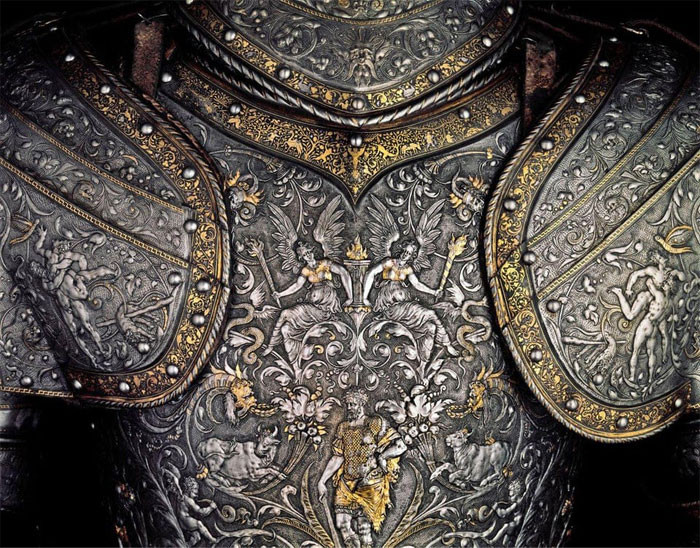
The armor, known as the Armor of Hercules, was created in the mid-16th century for Archduke (later Holy Emperor) Maximilian II. As can be clearly seen in the photo, the armor is covered with decorations and mythological scenes. Made in France, it demonstrates the exquisite skills and sophistication of the craftsmen of the time.
The intricate details show that this armor was not created to be worn in war. Its real purpose was to denote Maximilian’s noble rank at court or in similar contexts.
Ignoring the unique art on steel, this armor can also fulfill its protective function.
Ancient Egyptian ring depicting a red Carnelian cat dated to circa 1070–712 BC
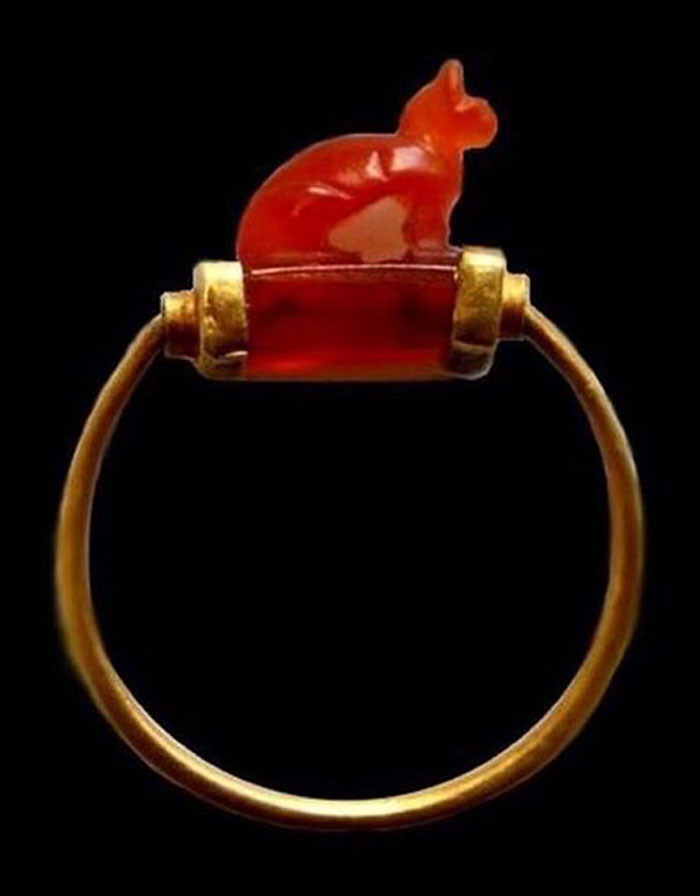
Everyone knows that in ancient Egypt, cats were an important figure in the religious life of the people because some of their gods were depicted with cat-like heads, so it is not surprising that cats Also shown on jewelry.
This ring is made of gold and the cat is carved from a semi-precious stone, carnelian. It is estimated to be at least 2,700 years old.
On the bottom of the cat, on the inner part of the ring, is carved a Wadjet eye or Eye of Horus, which was used as an amulet.
3,400-year-old paint palette found in Egypt
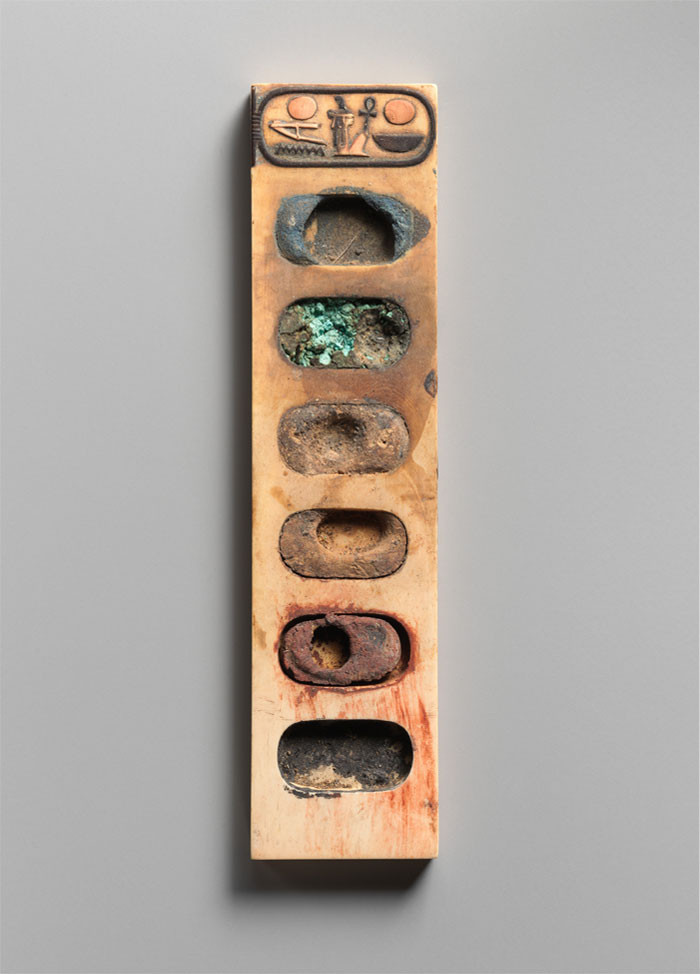
This is a painter’s palette, made from a single piece of ivory. Although carved around 1390-1352 BC, this particular palette is truly fascinating as it still contains blue, green, brown, yellow, red and black pigments in its reservoir.
There is also an inscription of pharaoh Amenhotep III in hieroglyphs.
During the reign of pharaoh Amenhotep III, Egypt was thriving in art and culture, and this work of art history reminds us of an ancient civilization that predated the Ancient Roman empire .
A ring that may have belonged to Caligula is about 2,000 years old
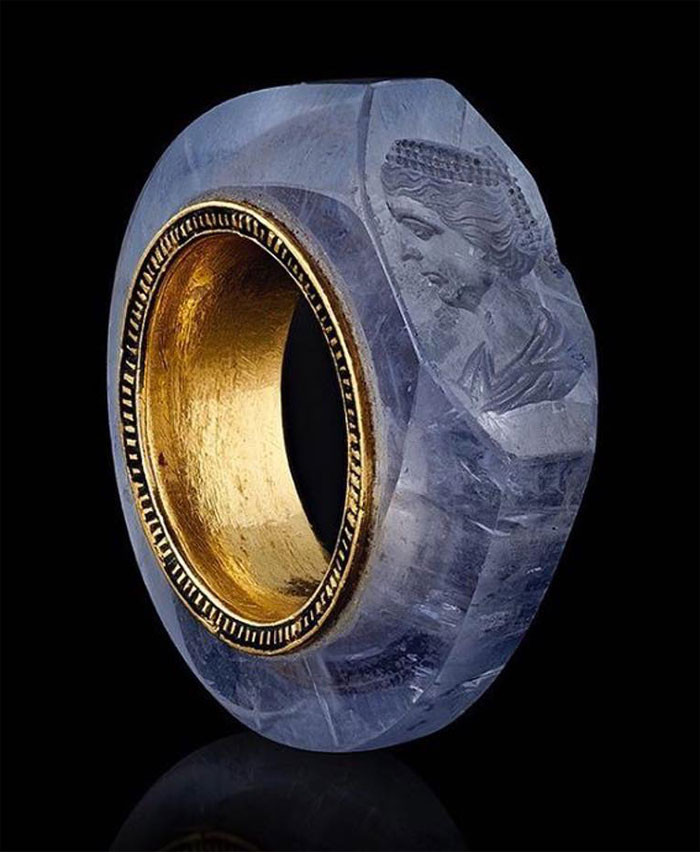
This beautiful sky blue ring is hololith, meaning it is made from a single piece of stone; in this case, it is made from sapphire.
If the gem isn’t enough to determine the ring’s value, it is also believed to have belonged to Roman Emperor Caligula, a king who ruled from 37 to 41 AD. The woman engraved on the top of the ring is believed to be Caesonia, Caligula’s fourth and final wife.
The ring was sold in 2019 and although news about the buyer or how much it sold for was not disclosed, there are a few suggestions that the ring could have been purchased for close to $600,000.
The 2,000 year old temple is still standing today and in really good condition
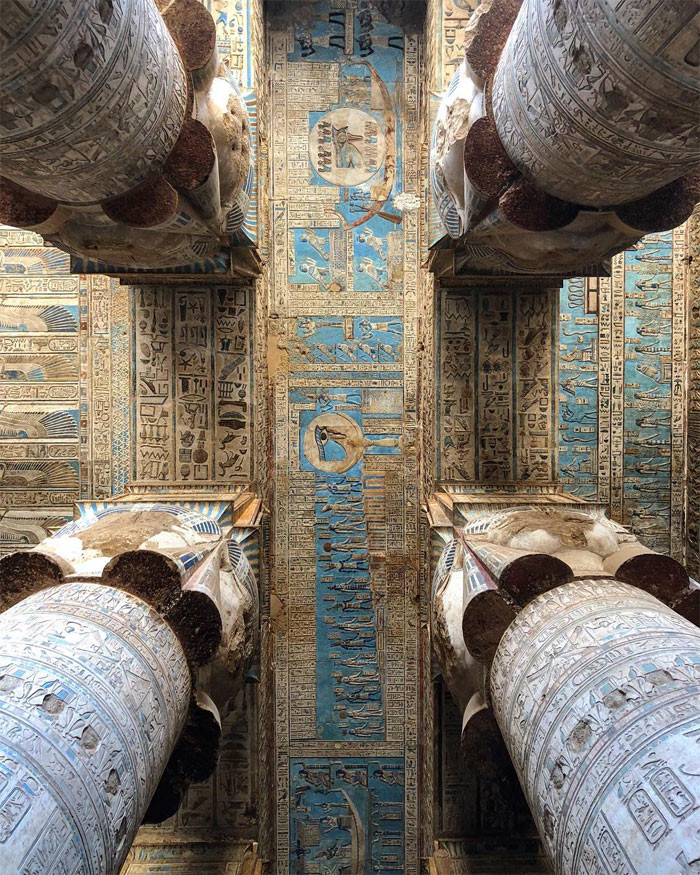
The Temple of Hathor is one of the best preserved temples in Egypt and it is the main temple of the Dendera Temple complex. It’s amazing that the temple still retains its original color because it is known that the inside was once covered with soot, but it was successfully restored.
The work’s good condition is even more surprising considering that it was built more than 2,000 years ago. The main temple was completed by Queen Cleopatra VII, around 54 to 20 BC.
2,400 year old shoes found in the Altai Mountains
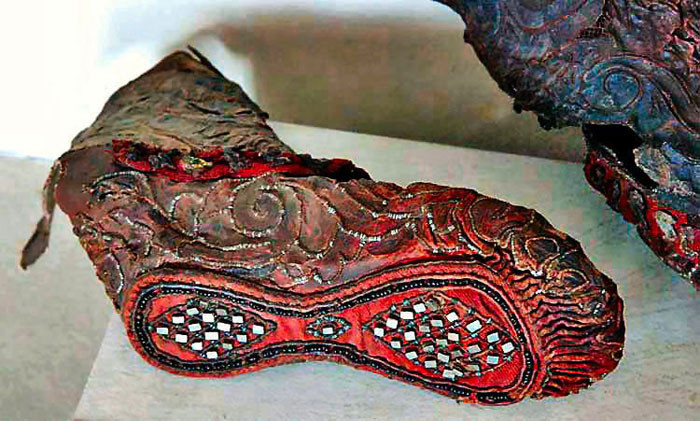
Archaeologists excavating tombs in the Altai mountains have found a pair of shoes from ancient times, very well preserved. These patterned boots were worn by a Scythian woman around 300–290 BC. They were made of leather, textiles, tin and gold. The shoes are in particularly good condition because of low temperatures in the area, so the ground where they were buried was frozen.
The condition of the base has raised theories about how the grains and crystals remain in perfect position. Some people claim that the shoes were made specifically for burial; There has also been speculation that it belonged to a high-status woman who was not used to walking much, or that it was just the Scythian lifestyle of spending most of the time on horses.
The globe made from ostrich eggs survived half a millennium
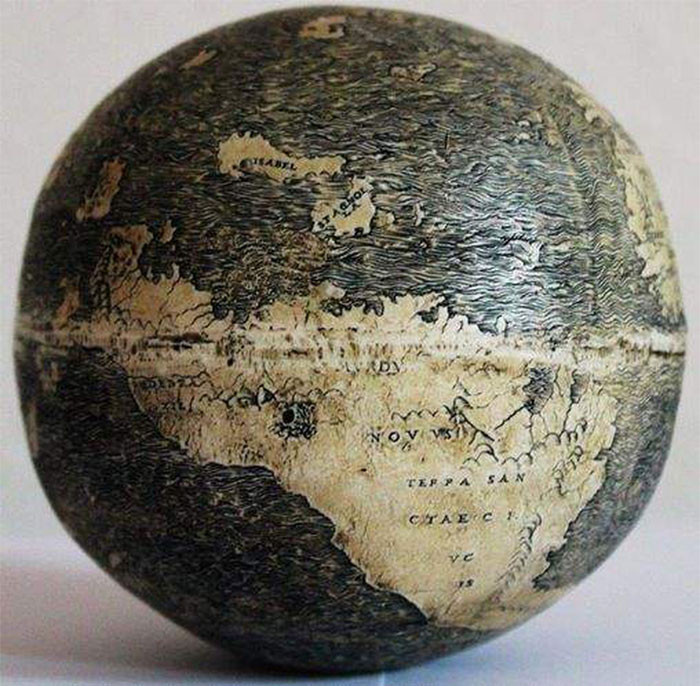
This globe is believed to have been created around 1510 and it would be the oldest map depicting the New World. The map is carved on an ostrich egg and is about the size of a grapefruit. This unusual material makes the globe extremely special because usually, old maps were drawn on materials such as vellum, sealskin or wood.
It may have been a map made for an Italian aristocratic family, because at that time it was fashionable to keep a few ostrich eggs to show off a family’s wealth.
The work “Veiled Christ” was sculpted by Giuseppe Sanmartino in 1753
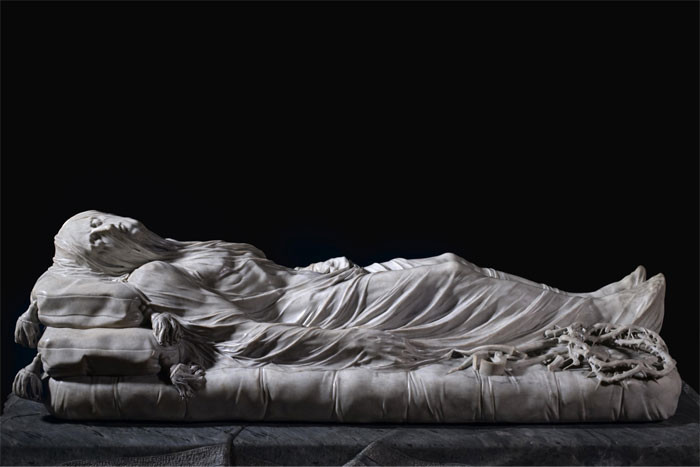
The “Veiled Christ” is one of the most famous and impressive works of art in the world. It was made by a young Neapolitan artist, Giuseppe Sanmartino, in 1753. What makes it so incredible is the veil. The sculpture is made from stone, but the way the veil is sculpted makes it appear transparent.
It was so realistic that over time, a legend spread around that initially, the sculpture was covered in a real veil, but over time, it was transformed into marble by a process chemistry.
Scientists who have examined the work are sure that the entire sculpture is made of marble. However, the creation of this legend proves how talented Giuseppe Sanmartino is.
The astronomical clock in Prague (Czech Republic) has been operating since 1410
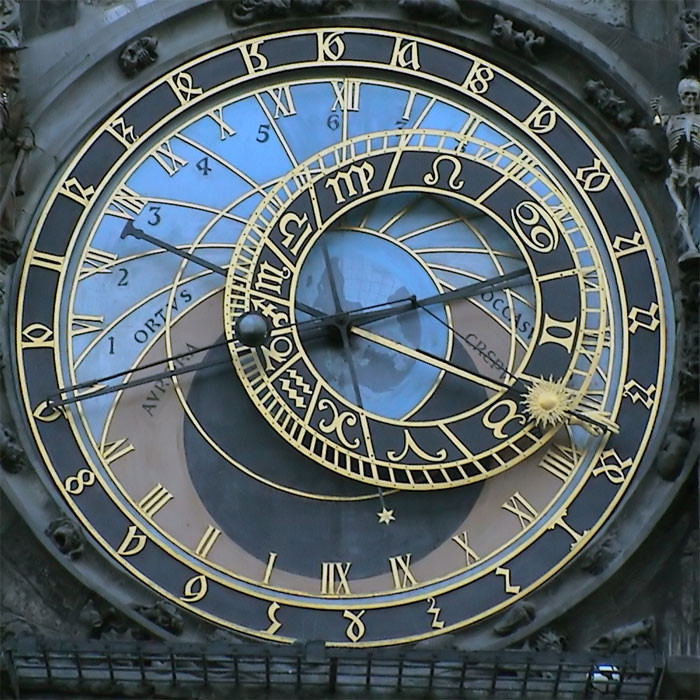
This eye-catching clock located in Prague, Czech Republic, makes it the third oldest astronomical clock in the world, but it is the oldest still in good working order until now. Nowadays.
Fully mechanized clocks, showing the relative positions of the Sun, Moon, Zodiac constellations and sometimes other planets. It clearly displays the time as well as date, astronomical and zodiac information.
And don’t forget the little spectacle every hour, when Death appears and turns its hourglass upside down. The 12 Apostles then marched and nodded to the crowd. Finally, the crowing sound rang out. It can be said that this watch is not simply a device to track time but also a masterpiece of art.
People believe in a curious superstition in Prague: If something happens to a clock or it is neglected, the skeleton next to the clock will nod and then the city of Prague will suffer the consequences. fruit. Maybe because of this superstition or because the clock is a part of history and a real decoration of the city, when the clock was damaged in 1945 by the Nazi uprising, people rejoiced. seemed to donate wood to repair the watch even though Quoc lacked materials.
Arkadiko Bridge was built between 1300 and 1190 BC, still in use today

The Arkadiko Bridge in Greece is over 3,300 years old, making it one of the oldest bridges still standing. Initially, this bridge was built specifically for horse-drawn carriages, but today, it is only used for pedestrians. The bridge connecting Tiryns with Epidaurus, two ancient Greek cities, existed during the Bronze Age.
The bridge is 22m long, 5.6m wide and 4m high, built using the Cyclopean masonry method, with limestone boulders, small stones and small pieces of tiles tightly joined together without mortar, this is a typical stone construction. figure found in Mycenaean architecture.
“Beware of the Dog” sign in a 2,000-year-old Roman house

Works like this have been found in many ancient Roman buildings. Such signs may be placed even in the absence of any dogs to ward off thieves or to warn guests of small dogs that may be stepped on.
The sign in the photo was discovered in the “House of the Tragic Poet” in Pompei. The house dates back to around the 2nd century BC. The words “cave canem”, which means “Beware of the dog”. This mosaic is placed on the floor at the main entrance.
Wooden sculpture depicting death, made in 1520

Death is often considered the subject of art, personified, taking on physical form. It is curious that in English and German culture, Death is seen as male, and in French and Italian culture, it is represented as female.
A 16th century sculptor, Hans Leinberger, interpreted Death as a skeleton. It represents what becomes of a person after they die. It has an arrow in one hand and a bow in the other, standing in a twisted position. The sculpture is made from a single piece of pear wood. The artist’s ability to carve partially exposed ribs and bones, tattered clothing and create the image of a contorted body shows extraordinary skill.
A pair of well-preserved shoes worn by the Romans 2,000 years ago
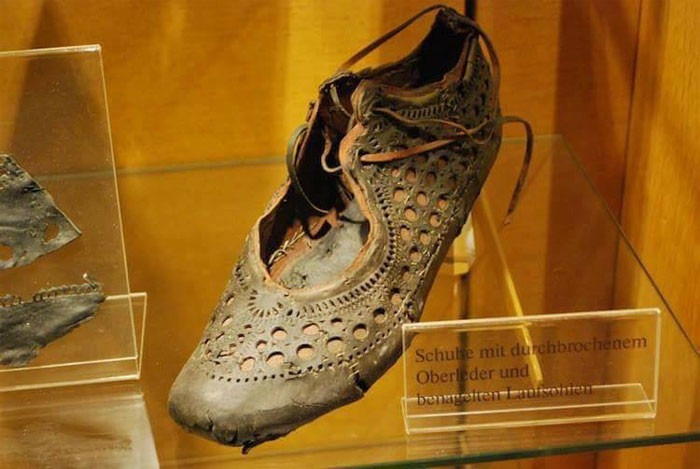
In modern times, Italy is certainly considered one of the greatest fashion capitals in the world, but did you know that Italians have been making good quality footwear since ancient times? These shoes were made in the first centuries of our era. The stylish shoe pictured here was found in a well in Saalburg, Germany.
The fact that it was found in Germany shows how fashion and shoemaking were spread in the Empire. In the photo are women’s shoes, as they are decorated with embroidery, motifs and often with lace. That not only shows the craftsmanship of the maker but also shows the status and wealth of the wearer.
A book that tells the story of how it became a weapon exists since the 17th century

There is something called a “pistol – prayer book” that was custom-made for Francesco Morosini, Duke of Venice, who lived in 1619–1694, so the fake prayer book was made at some point in the 17th century. The book was designed to hide a gun and could only be fired when the book was closed. It is probably most used for personal protection.
Floor of a 3rd century Roman villa
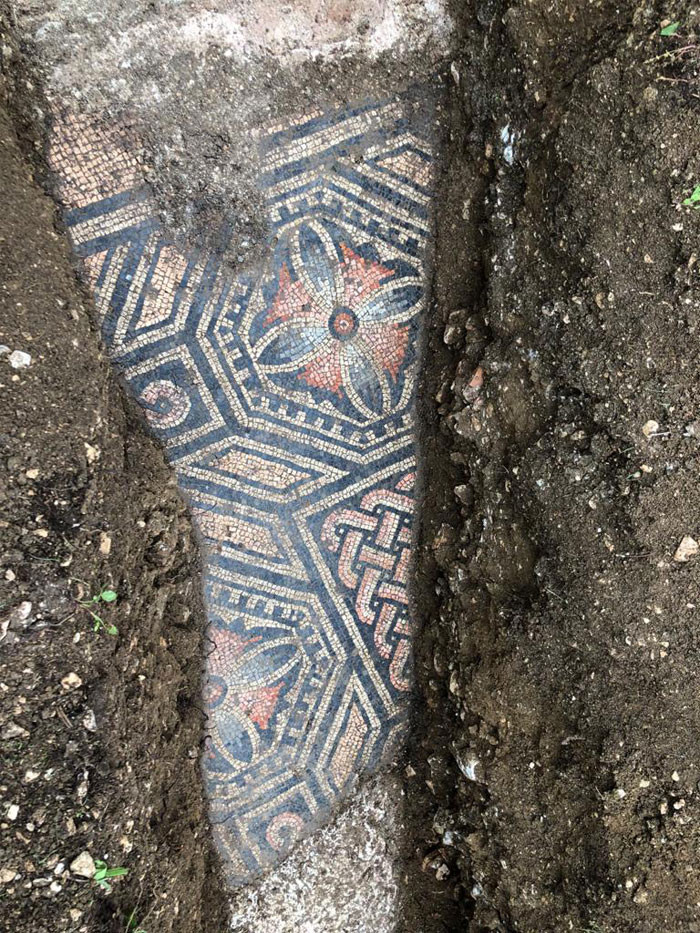
More than a century ago, archaeologists found evidence of a Roman villa not far from the Italian city of Verona. And after decades of searching, the remains of the mansion were found. They discovered a 3rd-century mosaic in a private vineyard in the town of Negrar di Valpolicella.
The mosaic is said to be the floor of the Domus, a house of wealthy owners, the tiles are pristine, in the picture you can see vibrant colors, recognizable patterns, after examining the entire site will Open to the public to visit.
The 12-cornered stone wall still stands as firmly as it did hundreds of years ago

It is not known exactly when the wall was built, but it is generally agreed that the stone wall originally surrounded a now-destroyed palace. Each stone used for this wall was cut to have twelve, five, six and seven corners, so putting them all together was actually a tedious job.
The stones are combined very precisely, without any gaps. The structure was designed to be built stably as the area is very earthquake prone and now we can truly say that it has stood the test of time. Currently, the wall has been recognized as a Cultural Heritage of Peru.
A 2,500 year old sword that belonged to Goujian, King of Yue

This sword belonged to Goujian, who ruled the Yue Kingdom from 496 to 465 BC. The characters on the sword read “King of Yue” and were made for personal use. The sword was found in a scabbard, so it was virtually undamaged.
The blade was made primarily of bronze, but the edges had a higher tin content and that may explain why the sword’s edge remained sharp. The blade is yellow and decorated with a diamond pattern, while the scabbard is decorated with blue crystals and turquoise.
A 19th century esoteric ritual dagger with the Grim Reaper emblazoned on the handle
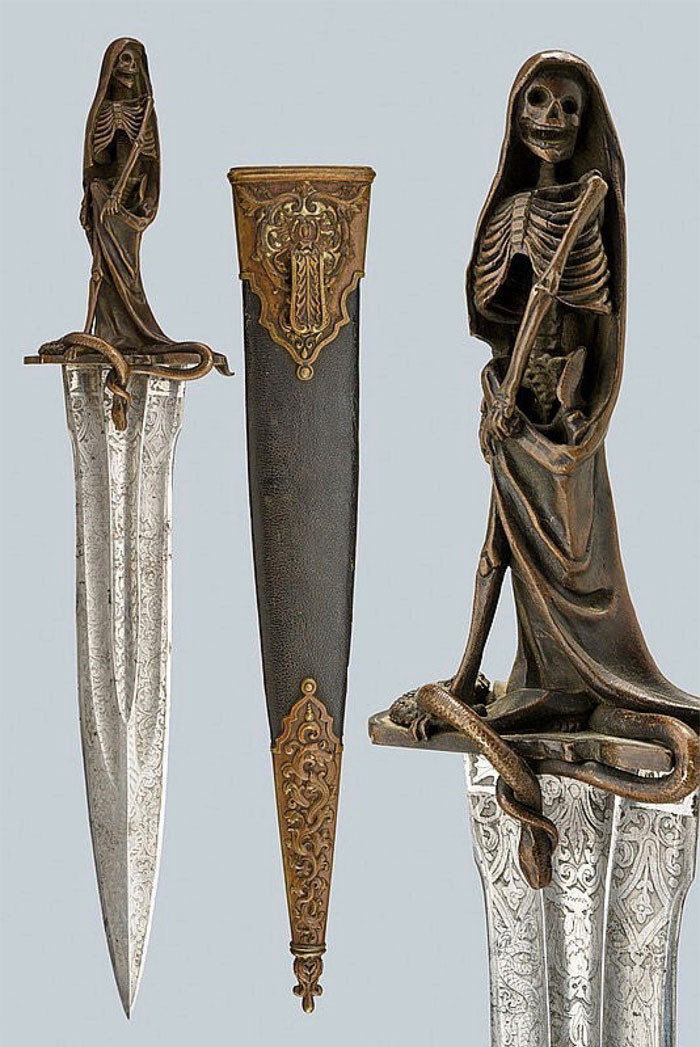
This rare dagger, believed to be used for esoteric rituals, was sold for €4,700 (~$5,692). According to the description, it is said to date from the 19th century and was made in France. The knife is quite long, about 43cm.
And the handle is the impressive part. Made of bronze, it depicts Death in a cloak and a twisted snake at his feet. The blade is also very detailed: it is carved with floral motifs, and a snake, an eagle and an owl. Floral motifs repeat on the bronze decoration of the wooden scabbard, sold with the dagger.
An antique knife from the 16th century doubles as a pistol and a calendar
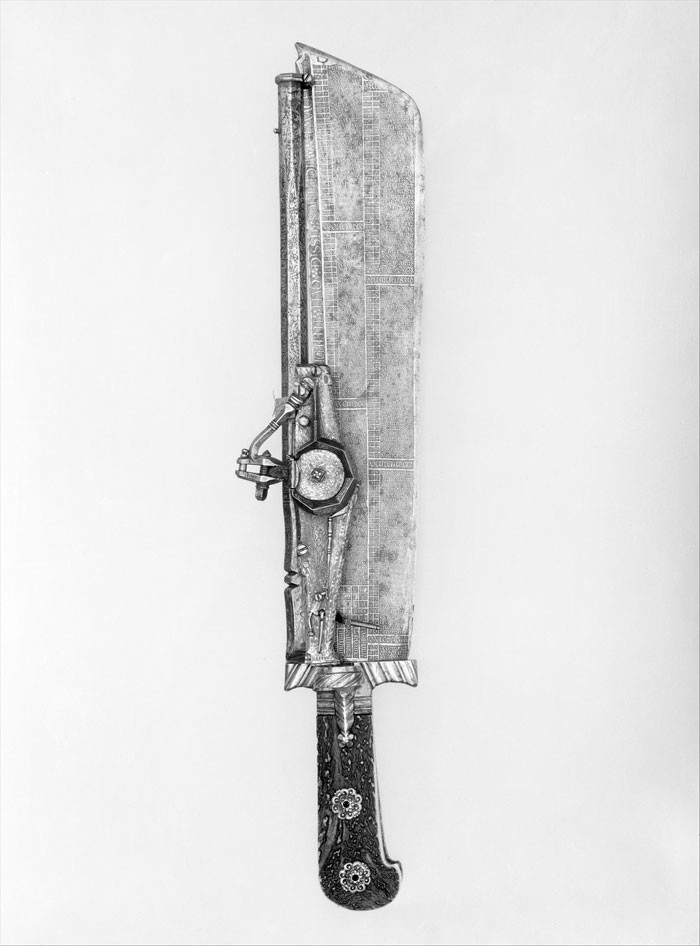
In the 16th century, gun manufacturers thought it would be a great idea to combine a pistol with a sword, knife, ax, or even a crossbow so that the owner of the gun could still defend himself if the gun mistakenly shot. Usually, these combined weapons are clumsy and impractical.
The weapon pictured is a hunting knife combined with a wheeled pistol. It was made by the German engraver, Ambrosius Gemlich, from two different pieces: the blade, dated around 1528–1529, inscribed with a calendar for the years 1529–34, and the barrel, dated 1540 or 1546.
A mortar created at the end of the 18th century in the shape of a tiger
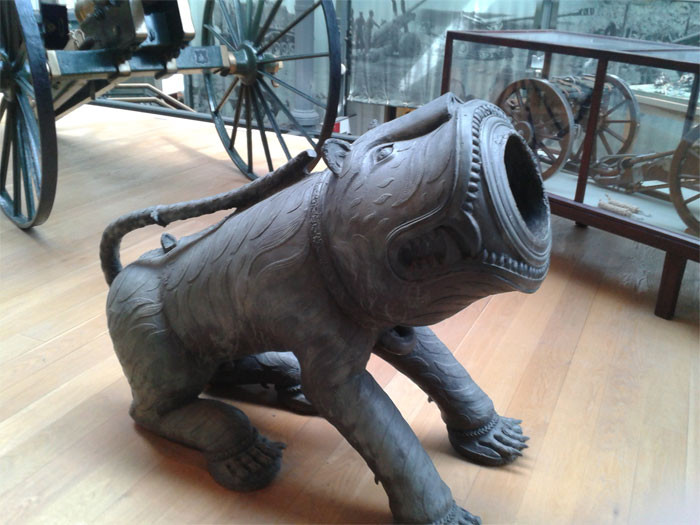
It is known that cows are considered sacred to Hindus, who make up about 80% of India’s population, but it is surprising that India’s national animal is the tiger. Tigers are very courageous and strong; Furthermore, some people consider them to be one of the most dangerous animals on the planet, so creating a tiger-shaped weapon makes sense.
This mortar was cast in India around 1770–1799. It was probably made for Tipu Sultan who was known as the Tiger of Mysore and he lived in 1753–1799. However, it is not yet complete and in its current state, it is inactive. But the goal is to let the bombs fly through the tiger’s jaws, threatening the enemy even more.




